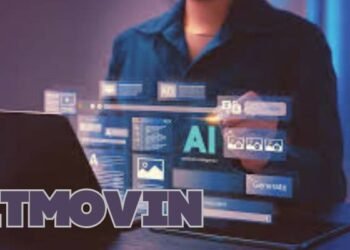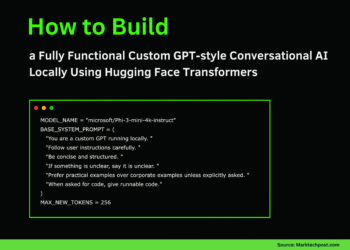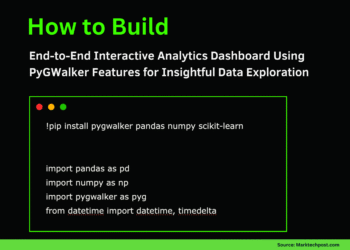
Adoption of new tools and technologies occurs when users largely perceive them as reliable, accessible, and an improvement over the available methods and workflows for the cost. Five PhD students from the inaugural class of the MIT-IBM Watson AI Lab Summer Program are utilizing state-of-the-art resources, alleviating AI pain points, and creating new features and capabilities to promote AI usefulness and deployment — from learning when to trust a model that predicts another’s accuracy to more effectively reasoning over knowledge bases. Together, the efforts from the students and their mentors form a through-line, where practical and technically rigorous research leads to more dependable and valuable models across domains.
Building probes, routers, new attention mechanisms, synthetic datasets, and program-synthesis pipelines, the students’ work spans safety, inference efficiency, multimodal data, and knowledge-grounded reasoning. Their techniques emphasize scaling and integration, with impact always in sight.
Learning to trust, and when
MIT math graduate student Andrey Bryutkin’s research prioritizes the trustworthiness of models. He seeks out internal structures within problems, such as equations governing a system and conservation laws, to understand how to leverage them to produce more dependable and robust solutions. Armed with this and working with the lab, Bryutkin developed a method to peer into the nature of large learning models (LLMs) behaviors. Together with the lab’s Veronika Thost of IBM Research and Marzyeh Ghassemi — associate professor and the Germeshausen Career Development Professor in the MIT Department of Electrical Engineering and Computer Science (EECS) and a member of the Institute of Medical Engineering Sciences and the Laboratory for Information and Decision Systems — Bryutkin explored the “uncertainty of uncertainty” of LLMs.
Classically, tiny feed-forward neural networks two-to-three layers deep, called probes, are trained alongside LLMs and employed to flag untrustworthy answers from the larger model to developers; however, these classifiers can also produce false negatives and only provide point estimates, which don’t offer much information about when the LLM is failing. Investigating safe/unsafe prompts and question-answer tasks, the MIT-IBM team used prompt-label pairs, as well as the hidden states like activation vectors and last tokens from an LLM, to measure gradient scores, sensitivity to prompts, and out-of-distribution data to determine how reliable the probe was and learn areas of data that are difficult to predict. Their method also helps identify potential labeling noise. This is a critical function, as the trustworthiness of AI systems depends entirely on the quality and accuracy of the labeled data they are built upon. More accurate and consistent probes are especially important for domains with critical data in applications like IBM’s Granite Guardian family of models.
Another way to ensure trustworthy responses to queries from an LLM is to augment them with external, trusted knowledge bases to eliminate hallucinations. For structured data, such as social media connections, financial transactions, or corporate databases, knowledge graphs (KG) are natural fits; however, communications between the LLM and KGs often use fixed, multi-agent pipelines that are computationally inefficient and expensive. Addressing this, physics graduate student Jinyeop Song, along with lab researchers Yada Zhu of IBM Research and EECS Associate Professor Julian Shun created a single-agent, multi-turn, reinforcement learning framework that streamlines this process. Here, the group designed an API server hosting Freebase and Wikidata KGs, which consist of general web-based knowledge data, and a LLM agent that issues targeted retrieval actions to fetch pertinent information from the server. Then, through continuous back-and-forth, the agent appends the gathered data from the KGs to the context and responds to the query. Crucially, the system uses reinforcement learning to train itself to deliver answers that strike a balance between accuracy and completeness. The framework pairs an API server with a single reinforcement learning agent to orchestrate data-grounded reasoning with improved accuracy, transparency, efficiency, and transferability.
Spending computation wisely
The timeliness and completeness of a model’s response carry similar weight to the importance of its accuracy. This is especially true for handling long input texts and those where elements, like the subject of a story, evolve over time, so EECS graduate student Songlin Yang is re-engineering what models can handle at each step of inference. Focusing on transformer limitations, like those in LLMs, the lab’s Rameswar Panda of IBM Research and Yoon Kim, the NBX Professor and associate professor in EECS, joined Yang to develop next-generation language model architectures beyond transformers.
Transformers face two key limitations: high computational complexity in long-sequence modeling due to the softmax attention mechanism, and limited expressivity resulting from the weak inductive bias of RoPE (rotary positional encoding). This means that as the input length doubles, the computational cost quadruples. RoPE allows transformers to understand the sequence order of tokens (i.e., words); however, it does not do a good job capturing internal state changes over time, like variable values, and is limited to the sequence lengths seen during training.
To address this, the MIT-IBM team explored theoretically grounded yet hardware-efficient algorithms. As an alternative to softmax attention, they adopted linear attention, reducing the quadratic complexity that limits the feasible sequence length. They also investigated hybrid architectures that combine softmax and linear attention to strike a better balance between computational efficiency and performance.
Increasing expressivity, they replaced RoPE with a dynamic reflective positional encoding based on the Householder transform. This approach enables richer positional interactions for deeper understanding of sequential information, while maintaining fast and efficient computation. The MIT-IBM team’s advancement reduces the need for transformers to break problems into many steps, instead enabling them to handle more complex subproblems with fewer inference tokens.
Visions anew
Visual data contain multitudes that the human brain can quickly parse, internalize, and then imitate. Using vision-language models (VLMs), two graduate students are exploring ways to do this through code.
Over the past two summers and under the advisement of Aude Oliva, MIT director of the MIT-IBM Watson AI Lab and a senior research scientist in the Computer Science and Artificial Intelligence Laboratory; and IBM Research’s Rogerio Feris, Dan Gutfreund, and Leonid Karlinsky (now at Xero), Jovana Kondic of EECS has explored visual document understanding, specifically charts. These contain elements, such as data points, legends, and axes labels, that require optical character recognition and numerical reasoning, which models still struggle with. In order to facilitate the performance on tasks such as these, Kondic’s group set out to create a large, open-source, synthetic chart dataset from code that could be used for training and benchmarking.
With their prototype, ChartGen, the researchers created a pipeline that passes seed chart images through a VLM, which is prompted to read the chart and generate a Python script that was likely used to create the chart in the first place. The LLM component of the framework then iteratively augments the code from many charts to ultimately produce over 200,000 unique pairs of charts and their codes, spanning nearly 30 chart types, as well as supporting data and annotation like descriptions and question-answer pairs about the charts. The team is further expanding their dataset, helping to enable critical multimodal understanding to data visualizations for enterprise applications like financial and scientific reports, blogs, and more.
Instead of charts, EECS graduate student Leonardo Hernandez Cano has his eyes on digital design, specifically visual texture generation for CAD applications and the goal of discovering efficient ways to enable to capabilities in VLMs. Teaming up with the lab groups led by Armando Solar-Lezama, EECS professor and Distinguished Professor of Computing in the MIT Schwarzman College of Computing, and IBM Research’s Nathan Fulton, Hernandez Cano created a program synthesis system that learns to refine code on its own. The system starts with a texture description given by a user in the form of an image. It then generates an initial Python program, which produces visual textures, and iteratively refines the code with the goal of finding a program that produces a texture that matches the target description, learning to search for new programs from the data that the system itself produces. Through these refinements, the novel program can create visualizations with the desired luminosity, color, iridescence, etc., mimicking real materials.
When viewed together, these projects, and the people behind them, are making a cohesive push toward more robust and practical artificial intelligence. By tackling the core challenges of reliability, efficiency, and multimodal reasoning, the work paves the way for AI systems that are not only more powerful, but also more dependable and cost-effective, for real-world enterprise and scientific applications.

















